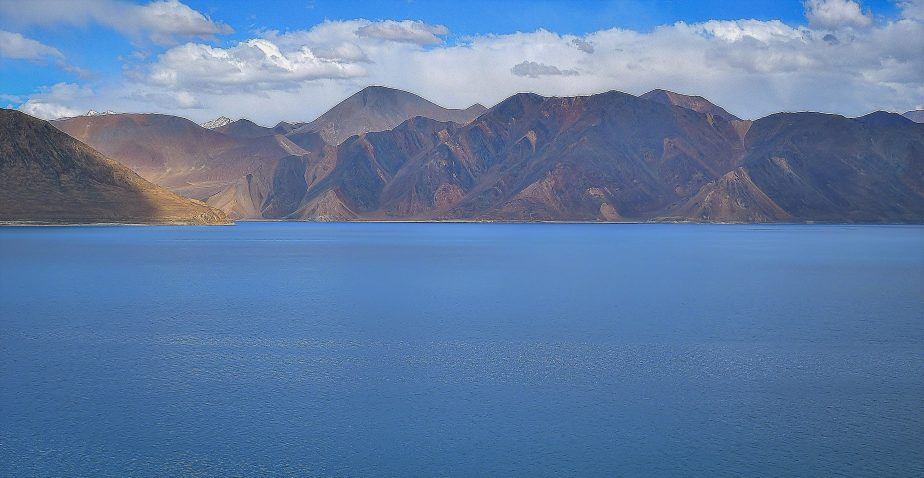Indian Defense Minister Outlines Ladakh Disengagement Plan

Rajnath Singh’s speech at the upper house of the Indian parliament described a plan to create a buffer zone in the north bank of Pangong Lake.
Indian Defense Minister Rajnath Singh confirmed in the upper house of the parliament on February 11 that Indian and Chinese forces have begun mutual disengagement in the north and south banks of Pangong Lake, key friction points in the months-long military standoff in eastern Ladakh. Simultaneously, photographs circulated by Indian defense journalists on social media show concrete signs of on-ground changes, including armored columns in the south bank, in the Chushul sector, being pulled back by both sides.
With these developments, many once again hope that a diplomatic resolution to the Ladakh standoff may indeed be in sight. Yesterday, a People’s Liberation Army statement had first announced the Pangong Lake disengagement plan. In his speech, Singh noted: “The agreement that we have been able to reach with the Chinese side for disengagement in the Pangong lake area envisages that both sides will cease their forward deployments in a phased, coordinated and verified manner.”
Going on to give concrete details of how the particularly vexing situation in the north bank/“fingers” area of the lake will be resolved, Singh said: “The Chinese side will keep its troop presence in the North Bank area to east of Finger 8. Reciprocally, the Indian troops will be based at their permanent base at Dhan Singh Thapa Post near Finger 3.” Recall that India claims the undefined Line of Actual Control (LAC) runs parallel to Finger 8, while China’s perception (and claim) extends to Finger 2.
It was China’s construction of a blacktopped road last summer reaching Finger 4 – which would have prevented Indian patrolling beyond that point and, therefore, effectively shifted the LAC – that has served as one of the principal points of contention in the standoff. According to the plan unveiled by Singh, essentially the area between Finger 3 and Finger 8 now would be a no-man’s land, serving as a buffer between the two forces. Singh also noted that patrolling in the north bank “to the traditional areas” would be suspended, and will only resume after further talks.
The disengagement in the north bank is linked to a “similar action” (Singh’s phrase) in the south. Already, images circulating on social media over the day have showed Chinese tanks pulling away in the south bank. Last August, India occupied a number of peaks in Kailash range, south of Pangong Lake and near Spanggur Lake, which provided the Indian army with an enormous tactical advantage over the PLA. It is certain the disengagement plan Singh has outlined will involve Indian forces vacating those heights as well, as part of a quid pro quo in the north bank “fingers” area.
It is important to note here that such a package solution has been up in the air once before, following the eighth round of military commanders’ talks last November. (See this November Print article by a former Indian army Northern Command chief, retired Lieutenant General H.S. Panag, for a detailed analysis of the plan — and why it falls short of meeting India’s core interests in the ongoing standoff, which lies in the Depsang area.) This begs the obvious question as to why it took one more round of talks, in January, for the plan to finally fall in place.
It is equally important to keep in mind that a plan for disengagement, or even limited steps toward it, hardly marks the end of the crisis. It was precisely during a disengagement process in the Galwan Valley north of Pangong Lake last June that Indian and Chinese troops ending up clashing, causing the deaths of 20 Indian soldiers along with unspecified Chinese casualties, and turning the standoff into a tense military crisis.
On his part, Singh made it clear that even if the Pangong Lake disengagement goes as planned, the standoff in Ladakh is far from over. As he reminded his audience, “The House should also know that there are still some outstanding issues with regard to deployment and patrolling at some other points along the LAC in Eastern Ladakh.” At this point, cautious optimism is the prevalent mood here in New Delhi.
